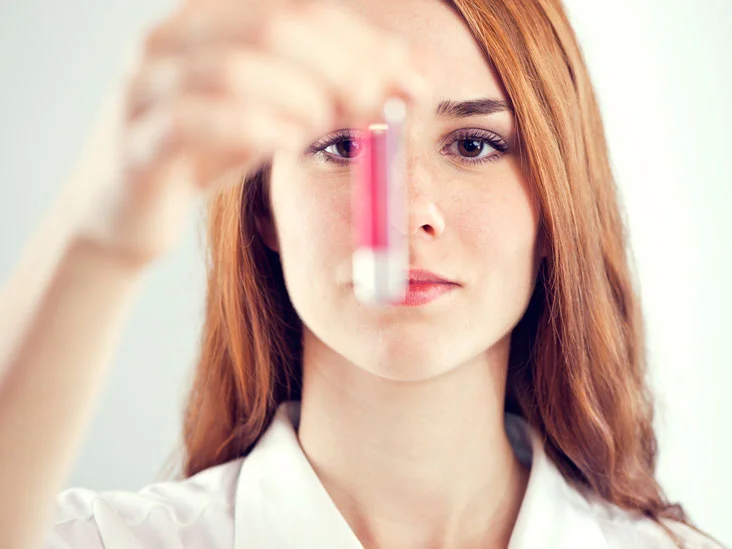
In my previous article, I explained some important details of estrogen dosing and monitoring. Let’s look now at how naturally-derived progesterone is safe and effective for the short and long term, and how it is dosed and monitored.
Why progesterone supplementation
A year ago, a new patient came to me taking Prempro. Prempro is conjugated estrogens + medroxyprogesterone acetate. It is used to reduce menopausal symptoms such as hot flashes and vaginal dryness - but it is not recommended for the long term, only for symptom improvement. Why? Because it contains both synthetic estrogen and synthetic progesterone, and large studies completed in 2002, collectively called the Women’s Health Initiative (WHI)[1], revealed that synthetic oral conjugated estrogen plus progestogen (synthetic progesterone) put women at increased risk for breast cancer, [2] [3] heart attack, stroke, and pulmonary embolism.[4]
This adverse long-term effect is because medroxyprogesterone (but not natural progesterone) produces some non-progesterone-like effects and can potentiate the proliferative (cancer-producing) action of estrogen in your body.[5]
Menopause management
The most common menopausal symptoms are hot flashes and sweats, vaginal dryness, trouble sleeping, and mood swings. You want a naturally compounded or micronized progesterone that is an exact chemical duplicate of your body’s homemade progesterone.
Here’s the good news: large clinical trials support natural (a.k.a. “bio-identical” or “bio-mimetic”) estradiol/estriol and progesterone as effective for curbing menopausal symptoms.[6] Not only do they curb symptoms, but they also reduce diseases such as breast cancer, cardiovascular disease, osteoporosis, and even Alzheimer’s dementia. The following is an overview of the studies that support this.
Studies supporting natural progesterone supplementation after menopause
Progesterone lowers breast cancer risk
Well-designed studies show that the use of natural progesterone lowers the risk of breast cancer:
In 1981 the Journal of Epidemiology[7] reported that 1083 women treated for infertility were followed for 13-33 years for incidence of breast cancer; the premenopausal risk for breast cancer was 5.4 times higher and the risk for death from cancer was 10 times more in women with low progesterone levels compared to those with normal levels.
A 2002 study reported in Cancer Epidemiology, Biomarkers & Prevention[8] showed in a case-control study of third-trimester progesterone levels and breast cancer risk that increasing levels of progesterone were associated with decreased risk of breast cancer; those in the highest quartile (1/4th) of progesterone levels had a 50 percent reduction in breast cancer compared with those in the lowest quartile of progesterone levels.
In 2004 a prospective study reported in the International Journal of Cancer,[9] progesterone levels were associated with lower breast cancer risk in 5963 women.
In 2008 researchers followed 80,000 postmenopausal women for over 8 years and found that those using natural progesterone along with estrogen significantly reduced breast cancer risk compared to the use of synthetic progestin.[10]
Progesterone lowers uterine cancer risk
In 2003 researchers found that transdermal or vaginal progesterone cream for four weeks reduced uterine lining thickening caused by an estrogen drug in postmenopausal women.[11]
Progesterone improves sleep
Low-dose, continuous combined hormone replacement therapy with estrogen and progesterone significantly improves sleep in postmenopausal women with sleep difficulty.[12]
Progesterone improves bone strength
Natural progesterone stimulates new bone formation and helps prevent osteoporosis.[13] Estrogen does too. Together, progesterone and estrogen collaborate for the maximal prevention of bone loss.[14]
Dosing and testing progesterone
Progesterone is often taken by peri-menopausal women who still have menstrual periods. Progesterone is best applied to the skin on days 15-24 of a cycle to mimic natural progesterone levels. Some caution should be mentioned here: it can increase fertility when applied in a cyclic fashion.
After menopause, it can be applied daily continuously with a 3-day break every 3 months. In this case, it is usually combined with Biest E2+E3 in a cream.
Once you are on progesterone for two months or longer, testing the levels makes sense. The dosage can be adjusted to symptom needs, and as long as it is in the reference range, you don’t need to worry. Just get it tested yearly once in range.
Therefore, supplementation with progesterone using physiological replacement doses conveys multiple health benefits for perimenopausal and menopausal women alike.
To healthy hormones and longevity,
Michael Cutler, M.D.
[1] Rossouw JE, Anderson GL, Prentice RL, et al. Risks and benefits of estrogen plus progestin in healthy postmenopausal women: principal results from the Women’s Health Initiative randomized controlled trial. JAMA.2002 Jul 17;288(3):321-33. [2] Colditz GA, Hankinson SE, Hunter DJ, et al. The use of estrogens and progestins and the risk of breast cancer in postmenopausal women. N Engl J Med. 1995 Jun 15;332(24):1589-93. [3] Chlebowski RT, et al. Breast Cancer after Use of Estrogen plus Progestin in Postmenopausal Women. N Engl J Med 2009; 360:573-587. [4] Risks and Benefits of Estrogen Plus Progestin in Healthy Postmenopausal Women JAMA. 2002;288(3):321-333. [5] Campagnoli C, Clavel-Chapelon F, Kaaks R, Peris C, Berrino F. Progestins and progesterone in hormone replacement therapy and the risk of breast cancer. The Journal of Steroid Biochemistry and Molecular Biology. 2005;96(2):95-108. https://www.ncbi.nlm.nih.gov/pmc/articles/PMC1974841/ [6] Leonetti HB, Longo S, Anasti JN. Transdermal progesterone cream for vasomotor symptoms and postmenopausal bone loss. Obstet Gynecol. 1999 Aug;94(2):225-8. [7] Cowan LD, et al. Breast cancer incidence in women with a history of progesterone deficiency. Am J Epidemiol 1981;114(2)209-217. [8] Peck JD, Huka BS, Poole C, et al. Steroid hormone levels during pregnancy and incidence of maternal breast cancer. Cancer Epidemiol Biomarkers Prev2002;11(4):361-368. [9] Micheli A, Muti P, Secreto G, et al. Endogenous sex hormones and subsequent breast cancer in premenopausal women. Int J Cancer 2004;112(2):312-318. [10] Fournier A, Berrino F, Clave-Chapelon F. Unequal risks for breast cancer associated with different hormone replacement therapies: results from the E3N cohort study. Breast Cancer Res Treat 2008;107(1):103-111. [11] Leonetti HB, Wilson KJ, Anasti JN. Topical progesterone cream has an antiproliferative effect on estrogen-stimulated endometrium. Fertil Steril. 2003 Jan;79(1):221-2. [12] Gambacciani M, Ciaponi M, Cappagli B, Monteleone P, Benussi C, Bevilacqua G, Vacca F, Genazzani AR. Effects of low-dose, continuous combined hormone replacement therapy on sleep in symptomatic postmenopausal women. Maturitas. 2005 Feb 14;50(2):91-7. PubMed PMID: 15653005. [13] Heersche JN, Bellows CG, Ishida Y. The decrease in bone mass is associated with aging and menopause. J Prosthet Dent. 1998 Jan;79(1):14-6. [14] Seifert-Klauss V, Prior JC. Progesterone and bone: actions promoting bone health in women. J Osteoporos. 2010 Oct 31;2010:845180.








